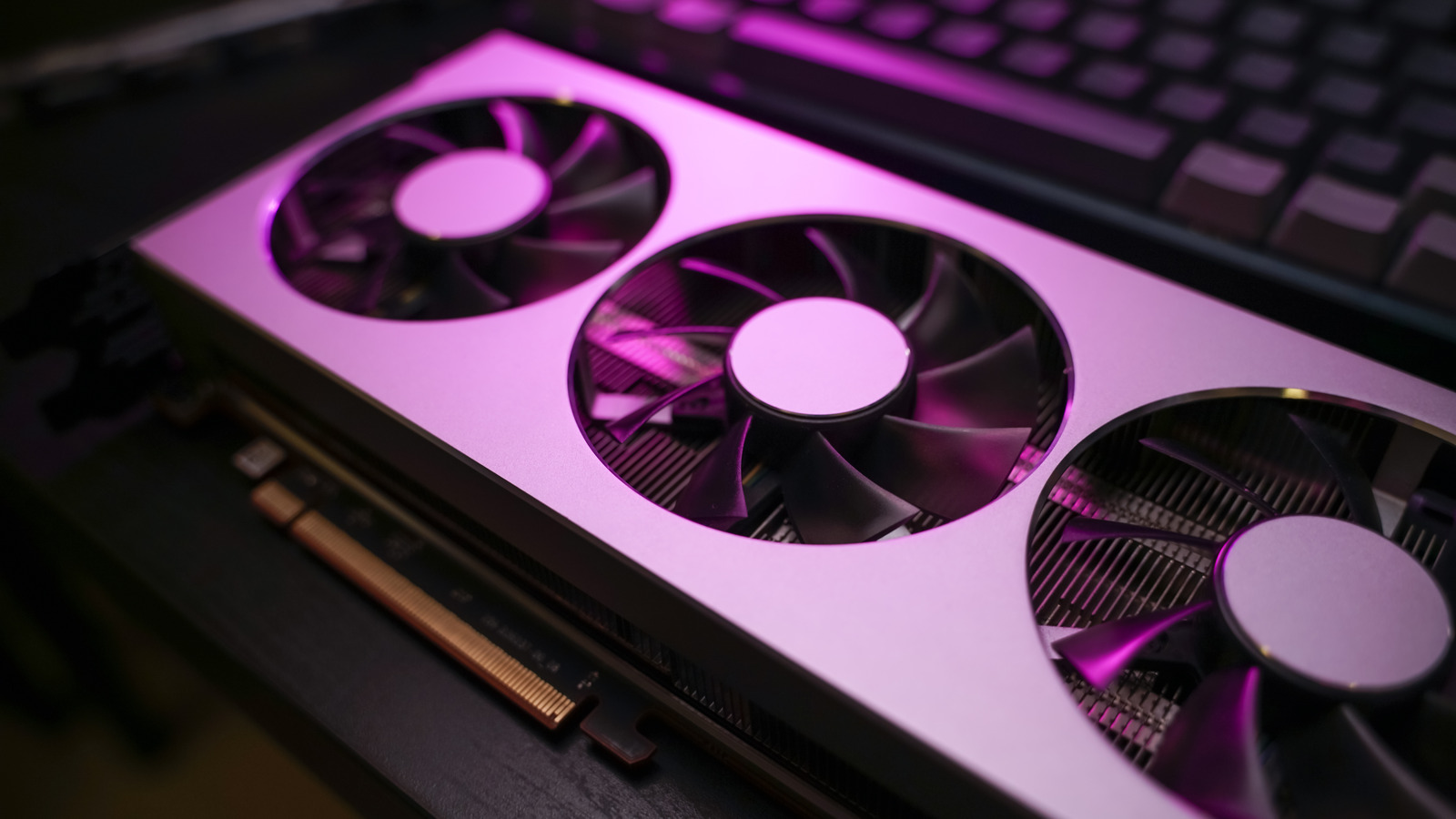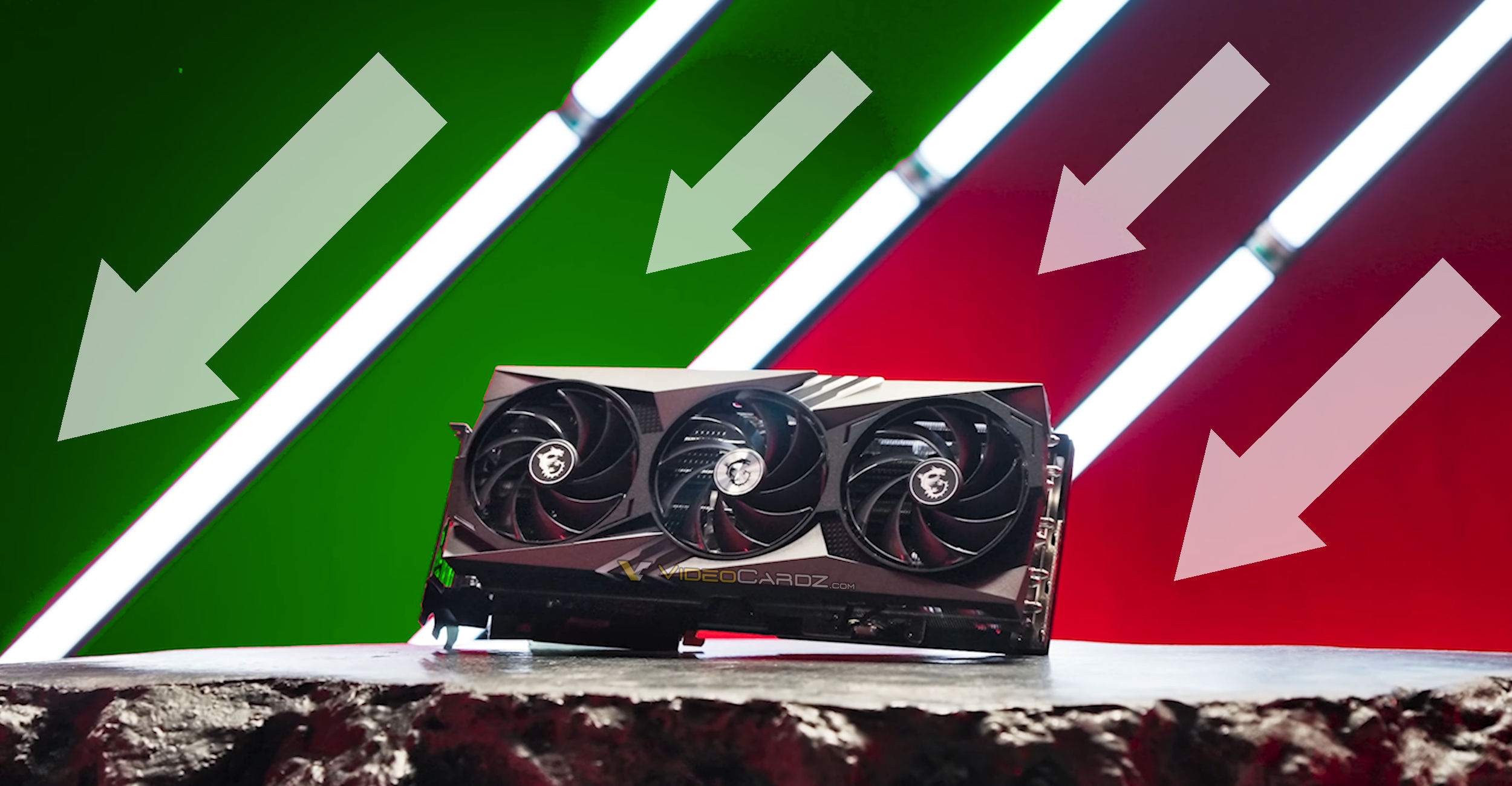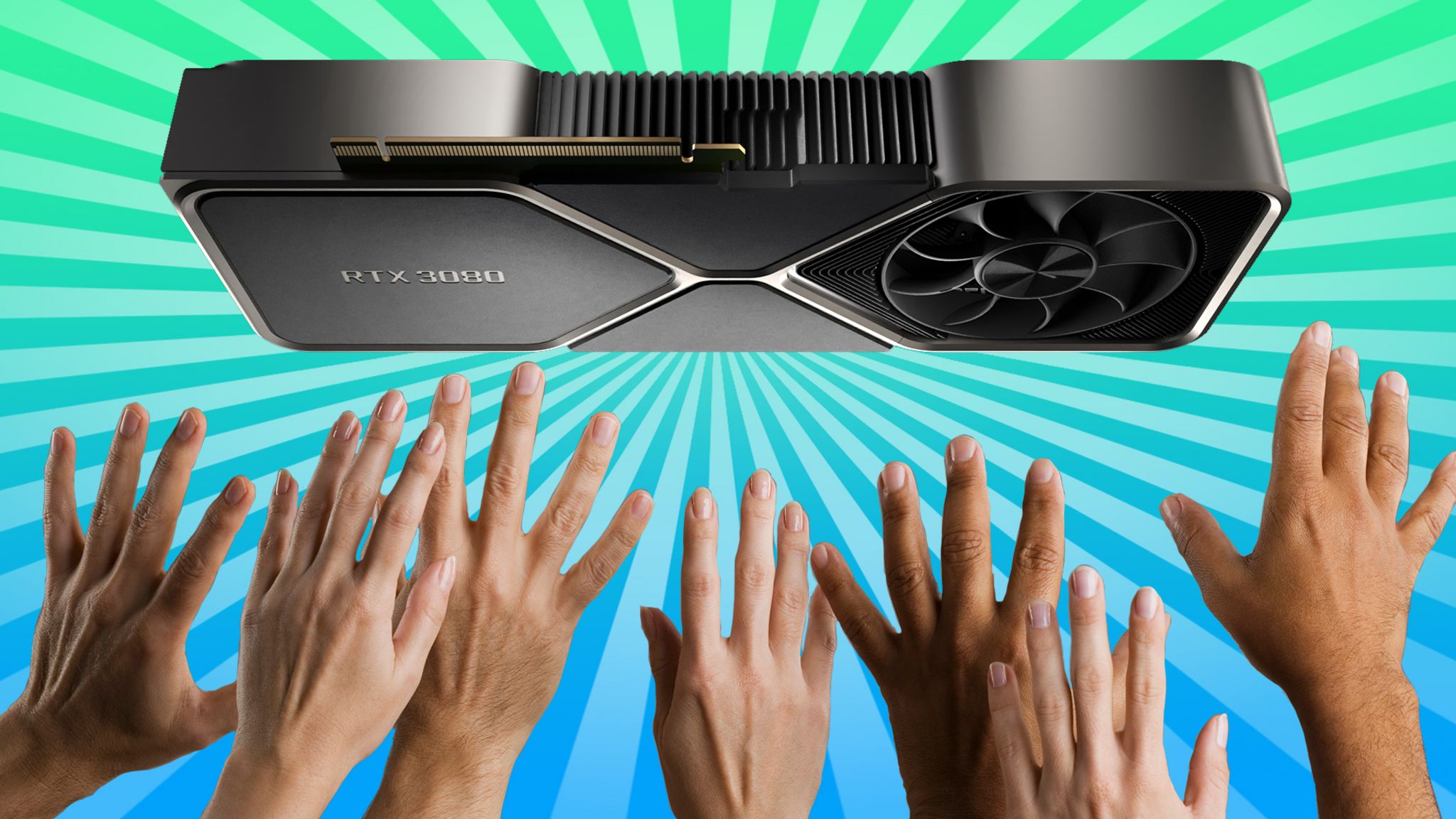Introduction
Gaming has become an incredibly popular form of entertainment, with millions of people worldwide investing in gaming rigs to ensure they have the best experience. Central to these rigs are Graphics Processing Units, or GPUs. However, recently there has been a significant increase in the prices of GPUs, leaving many consumers questioning why these components have become so expensive.
Gone are the days when GPUs were only used for gaming purposes. With the advancement of technology, GPUs have found their way into various industries, including data analysis, artificial intelligence, and cryptocurrency mining. The demand for GPUs has skyrocketed, especially in the gaming sector where enhanced graphics and higher frame rates are continually sought after.
One of the key factors contributing to the high prices is the limited supply of GPUs. Manufacturers are struggling to keep up with the increasing demand, resulting in a shortage of available GPUs in the market. Combine this with the fact that GPUs require advanced manufacturing processes and costly materials, and it’s no wonder prices have soared.
In recent years, the popularity of eSports has exploded, with professional tournaments and leagues attracting huge audiences. This surge in eSports has further driven the demand for powerful GPUs, as competitive gamers require cutting-edge hardware to gain a competitive edge. As a result, manufacturers have had to ramp up their production efforts, but this hasn’t been enough to meet the massive demand.
Another significant factor influencing the pricing of GPUs is the cryptocurrency mining boom. Cryptocurrencies like Bitcoin and Ethereum require substantial computing power for mining, and GPUs are well-suited for this task. Miners have been buying up GPUs in bulk, leading to increased competition among both gamers and miners in securing these components. This surge in demand from the cryptocurrency mining sector has compounded the shortage and driven prices even higher.
Furthermore, the rising costs of the components themselves have also contributed to the increased prices of GPUs. The raw materials and integrated circuitry needed to manufacture these components have seen price hikes, which are inevitably passed on to the consumers. Additionally, the tariffs imposed on imported components have further impacted the overall costs of GPUs.
Lastly, scalpers and resellers have taken advantage of the high demand and limited supply by purchasing GPUs in bulk and reselling them at exorbitant prices. This has led to further frustrations among consumers, as they struggle to secure a GPU at a reasonable price.
While the high prices of GPUs may be disheartening for many gamers and tech enthusiasts, it’s essential to understand the factors behind these inflated costs. From supply shortages to increased demand from multiple sectors, the GPU market is experiencing unprecedented challenges that have affected pricing. In the following sections, we will delve deeper into these reasons to gain a better understanding of why GPUs are now so expensive.
The Role of GPUs in Modern Computing
In the world of modern computing, Graphics Processing Units (GPUs) play a crucial role in enhancing the performance and visual experience of various applications. Originally designed for rendering graphics in video games, GPUs have evolved to become versatile processors capable of handling complex computational tasks.
Unlike CPUs (Central Processing Units), which excel at performing a wide range of tasks sequentially, GPUs are specifically designed for parallel processing. This means they can efficiently handle multiple calculations simultaneously, making them well-suited for applications that require massive parallel computing power.
One of the primary applications that heavily rely on GPUs is gaming. As games continue to demand more realistic graphics and intricate visual effects, GPUs have become indispensable for delivering immersive gaming experiences. They are responsible for rendering high-resolution textures, generating dynamic lighting, and performing real-time physics simulations, all of which contribute to creating lifelike virtual worlds.
Furthermore, GPUs are also extensively utilized in professional applications such as video editing, 3D modeling, and animation. These tasks require substantial computing power to process large amounts of visual data quickly. GPUs excel in these scenarios, accelerating rendering times and enabling creators to work more efficiently.
In recent years, the field of artificial intelligence (AI) has experienced significant growth, and GPUs have emerged as an essential tool for AI research and applications. Machine learning algorithms often rely on extensive mathematical calculations and data processing, which can be tremendously accelerated by leveraging the parallel computing capabilities of GPUs. This has led to breakthroughs in various AI domains, including image and speech recognition, natural language processing, and autonomous vehicle systems.
Another area where GPUs have found significant use is in data analysis and scientific research. Tasks like data mining, simulations, and modeling involve processing vast amounts of information and performing complex computations. GPUs can handle these tasks more efficiently, resulting in faster data analysis and increased computational efficiency.
Cryptocurrency mining is yet another domain where GPUs have gained popularity. Mining operations require immense computational power to solve complex mathematical problems and validate transactions on blockchain networks. Due to their parallel processing capabilities, GPUs are ideal for cryptocurrency mining, attracting enthusiasts and professional miners alike.
Overall, GPUs have become an integral part of modern computing, providing the processing power and capabilities needed for demanding applications. Their ability to handle parallel computations efficiently has unlocked new possibilities in gaming, professional applications, AI research, and scientific endeavors. As technology continues to advance, the role of GPUs in shaping the future of computing will undoubtedly become even more critical.
High Demand and Low Supply
One of the main factors contributing to the expensive prices of GPUs is the combination of high demand and low supply. The demand for GPUs has surged in recent years due to the increasing popularity of gaming, eSports, and various industries that rely on powerful visual processing.
Gaming has become a massive global industry, with millions of gamers worldwide seeking the best gaming experience possible. Gamers are constantly looking to upgrade their systems to enjoy the latest games with improved graphics, high resolutions, and smooth gameplay. As a result, there has been a significant increase in the demand for GPUs that can handle these demanding gaming requirements.
In addition to gaming, the rise of eSports has added another layer of demand for GPUs, especially among competitive gamers. eSports tournaments attract huge audiences and offer substantial prize pools, motivating gamers to invest in powerful hardware to gain a competitive edge. The demand for GPUs from eSports enthusiasts further strains the availability of these components.
Furthermore, GPUs are widely used in other industries such as video editing, 3D modeling, and scientific research, where their computational power is instrumental in processing large datasets and performing complex calculations. As these industries continue to grow and adopt advanced technologies, the demand for GPUs in these sectors also increases.
However, while the demand for GPUs has been steadily rising, the supply has struggled to keep up. The manufacturing process of GPUs is intricate and requires advanced technology and specialized facilities. GPU manufacturers face challenges in scaling up production to meet the soaring demand, resulting in a limited supply of available GPUs.
Additionally, the supply chain disruptions caused by various factors, such as global pandemics, trade disputes, and natural disasters, have further exacerbated the issue of low supply. These disruptions can lead to delays in manufacturing, shipping, and distribution, impacting the availability of GPUs in the market.
As a result of the high demand and low supply, the law of supply and demand comes into play, driving up the prices of GPUs. Consumers are willing to pay a premium to secure these components, leading to inflated prices in the market. This situation is frustrating for gamers, professionals, and enthusiasts who are seeking to upgrade their systems or enter new industries that rely on powerful GPU performance.
In the following sections, we will explore other factors contributing to the high prices of GPUs, such as the increase in gaming and eSports, the cryptocurrency mining boom, advanced manufacturing processes, rising costs of components, tariffs, and reselling practices. Understanding these factors will provide further insights into the reasons behind the current expensive GPU market.
Increase in Gaming and eSports
The gaming industry has experienced explosive growth in recent years, becoming one of the largest entertainment sectors in the world. As the popularity of gaming continues to rise, so does the demand for high-performance GPUs.
The advancements in gaming technology have pushed the boundaries of what is possible in terms of visual and interactive experiences. Modern games feature stunning graphics, realistic physics engines, and immersive environments that require significant computational power to render in real-time. Gamers are constantly seeking to upgrade their systems to enjoy these visually rich and engaging gaming experiences.
Furthermore, the rise of eSports has contributed to the increased demand for GPUs. eSports has transformed competitive gaming into a professional sport, with tournaments boasting large prize pools and attracting millions of viewers. Competitive gamers invest in powerful hardware, including GPUs, to ensure they have the advantage of smooth gameplay, high frame rates, and improved visual fidelity.
The intense competition in eSports means that even the smallest performance advantage can make a significant difference. Players require GPUs that can handle the demanding graphics of modern games, allowing them to react quickly, analyze the game environment accurately, and execute precise maneuvers.
Moreover, the streaming industry has seen significant growth alongside gaming and eSports. Many gamers now regularly stream their gameplay to platforms like Twitch, YouTube Gaming, and Mixer. Streaming requires powerful hardware to capture, encode, and transmit high-quality video and audio content in real-time. GPUs play a crucial role in ensuring smooth and high-quality streaming experiences for both streamers and viewers.
The increasing popularity of gaming and eSports has created a massive market that drives the demand for GPUs. As more gamers and eSports enthusiasts enter the market and seek to upgrade their systems, the demand for high-performance GPUs continues to surge.
However, the demand for GPUs in the gaming and eSports industries is not the only factor contributing to the high prices. Other factors, such as the cryptocurrency mining boom, advanced manufacturing processes, rising costs of components, tariffs, and reselling practices, all play a role in the current expensive GPU market. We will explore these factors in the following sections to gain a comprehensive understanding of the situation.
Cryptocurrency Mining Boom
The emergence and popularity of cryptocurrencies have had a significant impact on the demand and prices of GPUs. Cryptocurrencies like Bitcoin and Ethereum require extensive computational power to mine new coins and validate transactions on their respective networks. As a result, GPUs have become a preferred choice for cryptocurrency miners.
Mining cryptocurrencies involves solving complex mathematical problems that require massive parallel computing power. This is where GPUs excel, as they can handle multiple calculations simultaneously, significantly speeding up the mining process compared to traditional CPUs.
During the early days of cryptocurrencies, mining could be done effectively using consumer-grade GPUs. However, as digital currencies gained traction and their value skyrocketed, more people entered the mining scene, leading to intense competition. Miners began pooling resources and investing in large-scale mining operations, which further intensified the demand for GPUs.
The surge in demand from cryptocurrency miners created a scarcity of available GPUs in the market. This scarcity, combined with the escalating demand from gamers and other industries, led to a situation where GPUs became highly sought after and difficult to acquire.
Notably, certain cryptocurrencies, like Ethereum, are specifically designed to be ASIC-resistant, meaning they cannot be efficiently mined using specialized hardware called Application-Specific Integrated Circuits (ASICs). Since GPUs are widely accessible and more versatile than ASICs, they became the go-to choice for mining Ethereum and other ASIC-resistant cryptocurrencies.
As cryptocurrency mining became an increasingly lucrative endeavor, miners began buying GPUs in bulk, further fueling the demand and creating shortages. This trend led to sharp price increases as consumers, both miners and gamers, competed for the limited supply of GPUs available.
While the cryptocurrency market experiences fluctuations, with boom and bust cycles, the impact on GPU demand remains significant. Despite the volatility, the allure of potentially high profits from mining cryptocurrencies continues to attract individuals and organizations to invest in GPUs.
It’s worth noting that GPU manufacturers have responded to the cryptocurrency mining boom by releasing specialized mining editions of their GPUs or implementing measures to limit their usage for mining purposes. However, these efforts have had limited success in curbing the uneven demand caused by cryptocurrency mining.
Overall, the cryptocurrency mining boom has had a profound impact on the GPU market. The demand from miners, coupled with the already high demand from other industries, has created a supply shortage and driven up prices. While the cryptocurrency market may undergo fluctuations, the influence of mining on the availability and cost of GPUs cannot be ignored.
Advanced Manufacturing Process
Modern GPUs are marvels of engineering, built using advanced manufacturing processes that require cutting-edge technology and specialized facilities. These complex manufacturing processes contribute to the high prices of GPUs.
GPU manufacturers utilize advanced semiconductor fabrication technology, which involves intricate steps to create the microchips that power these components. The manufacturing process includes processes like photolithography, etching, doping, and metallization. These steps require precise control over temperature, pressure, and chemical reactions to ensure the production of high-quality chips.
The fabrication of GPUs involves working with nanometer-scale features, with the latest GPUs utilizing process nodes as small as 7 or even 5 nanometers. Shrinking the size of transistors and increasing transistor density allows for more powerful and energy-efficient GPUs. However, these smaller process nodes are more challenging and expensive to manufacture, requiring advanced equipment and advanced materials.
The research and development costs associated with developing and refining these advanced manufacturing processes are substantial. GPU manufacturers invest significant resources into research, testing, and prototyping to perfect their manufacturing techniques and stay ahead of the competition. These costs are reflected in the final price of the GPUs.
In addition to the inherent complexity of manufacturing, maintaining a high yield rate is critical for profitability. The fabrication process must consistently produce chips that meet strict quality standards to minimize scrap and maximize usable chips. Maintaining a high yield rate requires extensive testing, monitoring, and quality control measures, further adding to the cost of production.
Another important consideration is the use of materials in GPU manufacturing. Advanced GPUs require specific metals, ceramics, and other materials with high performance characteristics. These materials can be expensive due to their unique properties and manufacturing requirements.
The combination of advanced manufacturing processes, research and development costs, stringent quality control, and specialized materials adds to the overall price of GPUs. Each generation of GPUs brings advancements that require significant investment, and these costs are passed on to consumers.
While the advanced manufacturing processes enable the creation of powerful and efficient GPUs, they also contribute to the increasing prices of these components. As technology continues to evolve and manufacturers push the boundaries of what is possible, the costs associated with advanced manufacturing processes will remain a factor in the pricing of GPUs.
Rising Costs of Components
Another significant factor contributing to the expensive prices of GPUs is the rising costs of the components used in their production. GPUs are composed of various electronic components, each of which has its own associated costs.
One key component that affects the price of GPUs is the graphics chip itself. The manufacturing of these chips involves highly intricate and precise processes, requiring specialized equipment and materials. As technology advances, the complexity and sophistication of these chips increase, resulting in higher production costs.
In addition to the graphics chip, other components such as memory modules, power delivery systems, cooling solutions, and connectors contribute to the overall cost of GPUs. These components are subject to market price fluctuations, availability, and global supply chain dynamics.
The scarcity of certain components, such as memory modules, can significantly impact the production and pricing of GPUs. If the supply of a particular component becomes limited, manufacturers may have to pay higher prices or seek alternative sources, both of which can increase the overall cost of producing GPUs.
Another factor contributing to the rising costs of components is the tariffs and trade wars between countries. Import tariffs imposed on electronic components and raw materials can drive up the cost of manufacturing GPUs. Manufacturers may have to absorb the additional expenses or pass them on to consumers, further increasing the prices of GPUs.
Furthermore, fluctuations in the currency exchange rates can also impact the costs of components. Manufacturers that rely on importing components may face increased expenses when the currency exchange rates are unfavorable, which can be reflected in the final price of GPUs.
Additionally, the global demand for electronic components has increased across various industries, further driving up the costs. This increased demand puts pressure on the supply chain, making it more challenging for manufacturers to secure components at reasonable prices.
Overall, the rising costs of components, driven by factors such as advanced manufacturing processes, component scarcity, tariffs, trade wars, exchange rates, and increased global demand, contribute to the expensive prices of GPUs. Manufacturers must balance these cost considerations while meeting the growing demand for high-performance GPUs.
Tariffs and Trade Wars
Tariffs and trade wars between countries can have a significant impact on the pricing of GPUs. Tariffs are taxes imposed on imported goods, including electronic components and raw materials, which can increase the costs of manufacturing GPUs.
In recent years, there have been several instances of trade tensions and disputes between countries, resulting in the implementation of tariffs and trade restrictions. These measures aim to protect domestic industries and address perceived trade imbalances. However, they can inadvertently lead to higher costs for manufacturers and consumers.
When tariffs are imposed on imported components and materials used in assembling GPUs, manufacturers face increased expenses. They may have to pay higher prices to import necessary components or seek alternative suppliers, both of which can drive up the production costs of GPUs.
Moreover, trade wars and retaliatory measures among countries can disrupt global supply chains. Manufacturers must navigate these complexities, dealing with delays, uncertainties, and potential disruptions in the supply of components. These disruptions can further impact the availability and prices of GPUs in the market.
Furthermore, exchange rate fluctuations resulting from trade wars and other economic factors can also influence the prices of GPUs. Currency devaluations or appreciations can affect the costs of importing components and materials, which manufacturers may pass on to consumers.
Consumers end up bearing the brunt of the increased costs caused by tariffs and trade wars. The prices of GPUs can rise due to the additional expenses incurred by manufacturers, who may choose to pass on these costs to maintain profitability.
It is important to note that the intricate nature of the global electronics industry means that the impact of tariffs and trade wars is not limited to the countries directly involved. Supply chains are highly interconnected, making it challenging to isolate the effects of these measures on specific industries or products.
While tariffs and trade wars are intended to protect and promote domestic industries, they can inadvertently lead to higher prices and limited availability of GPUs. The economic and political factors influencing trade dynamics have far-reaching consequences that affect consumers, manufacturers, and the overall GPU market.
Scalpers and Resellers
One of the factors exacerbating the high prices of GPUs is the presence of scalpers and resellers in the market. These individuals or groups take advantage of the high demand and limited supply by purchasing GPUs in bulk and reselling them at inflated prices.
Scalpers and resellers employ various tactics to acquire a large number of GPUs at retail price, often outstripping the supply available to individual consumers. They utilize automated bots and scripts to rapidly purchase GPUs as soon as they become available online, giving them an unfair advantage over regular customers.
Once they have secured a significant number of GPUs, scalpers and resellers list them on online marketplaces or auction sites at significantly higher prices. These prices often far exceed the original retail price, exploiting the desperation of consumers who are unable to acquire GPUs through legitimate channels.
This practice of scalping and reselling creates a secondary market where GPUs are marketed at exorbitant prices, making it challenging for average consumers to obtain these components at a reasonable cost. It fuels frustration among consumers who are forced to either pay inflated prices or wait for stock to be replenished.
While scalping and reselling are not illegal, they have drawn widespread criticism for their detrimental impact on fair market access. Manufacturers and retailers have attempted to combat this issue by implementing measures like bot detection systems, quantity limits, and anti-scalping initiatives. However, these efforts have had limited success in curbing the practices of scalpers and resellers.
Furthermore, the rise of online marketplaces and auction sites has made it easier for scalpers and resellers to operate. The anonymity and ease of conducting online transactions provide an ideal platform for these individuals to profit from the scarcity of GPUs.
The presence of scalpers and resellers further exacerbates the already difficult situation for consumers who are already facing high prices due to factors such as high demand, low supply, and manufacturing costs. It adds another layer of frustration for those seeking to purchase GPUs at fair prices directly from retailers.
Addressing the issue of scalpers and resellers requires a collaborative effort between manufacturers, retailers, and online marketplaces. Implementing stricter purchase limits, developing enhanced bot detection systems, and enforcing policies to discourage scalping can help alleviate the negative impact on fair market availability and prices of GPUs.
Overall, the presence of scalpers and resellers contributes to the inflated prices of GPUs, making it increasingly difficult for consumers to acquire these components at reasonable costs. Efforts to address this issue aim to restore fairness and accessibility to the GPU market.
Conclusion
The increasing prices of GPUs can be attributed to various factors that have created a challenging market for consumers. High demand, low supply, the rise in gaming and eSports, the cryptocurrency mining boom, advanced manufacturing processes, rising costs of components, tariffs, and the presence of scalpers and resellers all contribute to the expensive prices of GPUs.
The demand for powerful GPUs has surged in recent years, driven by the growing popularity of gaming, eSports, and industries that rely on high-performance visual processing. This increased demand has strained the limited supply of GPUs, leading to price hikes and scarcity.
The cryptocurrency mining boom has further intensified the demand for GPUs as miners seek to obtain these components for their mining operations. As a result, competition among gamers, miners, and other consumers has amplified the scarcity and driven up prices.
The advanced manufacturing processes required to produce GPUs, coupled with the rising costs of components, have also contributed to the expensive prices. Research and development costs, quality control measures, and specialized materials further increase production expenses, which are ultimately reflected in the final price of GPUs.
Tariffs and trade wars have introduced additional challenges to the GPU market, impacting the costs of importing components and materials needed for production. These factors, along with exchange rate fluctuations, can directly affect the prices of GPUs and create further uncertainties in the market.
Lastly, the presence of scalpers and resellers who exploit the high demand and limited supply worsens the situation for consumers. They purchase GPUs in bulk and resell them at inflated prices, further driving up the costs for those seeking to acquire GPUs at fair market prices.
While the current market conditions may be disheartening for consumers, understanding the contributing factors can provide insights into the reasons behind the expensive prices of GPUs. Manufacturers, retailers, and regulators must work together to address these challenges and strive for a fair and accessible GPU market where consumers can obtain these components at reasonable prices.
As technology continues to evolve and the demand for GPUs persists, it is essential to monitor and adapt to the ever-changing dynamics of the market. By doing so, manufacturers can better meet the growing demand and ensure more accessible pricing for consumers, helping to foster a thriving and sustainable GPU industry.

























